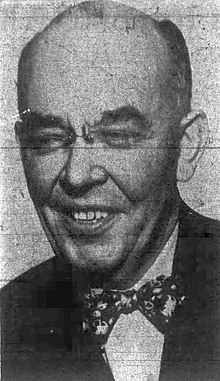Nicolai Malko

Nicolai Andreyevich Malko (Russian: Никола́й Андре́евич Малько́, Ukrainian: Микола Андрійович Малько; 4 May 1883 – 23 June 1961) was a Russian-born American[1] symphonic conductor.
Biography
Malko was born in
In 1906 he completed his studies in history and philology at the Saint Petersburg University. In 1909 he graduated from the Saint Petersburg Conservatory, where he had included Rimsky-Korsakov, Glazunov and Lyadov among his teachers. He published articles on music criticism in the Russian press and performed as pianist and later as conductor. In 1909 he became a conductor at the Mariinsky Theatre. Six years later he became the head conductor there.
From 1909 he studied conducting in Munich under
He was succeeded as director of the Leningrad Philharmonic by his pupil
While the outbreak of World War II in 1940, Malko settled in the United States, where he taught conducting. His thoughts on conducting technique were gathered together and published in a volume titled, The Conductor and his Baton (1950); A handbook on conducting currently available in the United States (Elizabeth A. H. Green: The Modern Conductor, 1996) is explicitly based on the principles set forth in Malko's book. From 1942 to 1946, he was music director of the Grand Rapids Symphony in Grand Rapids, Michigan, which was a community orchestra at the time.
Malko recorded extensively for
A 4-CD box set featuring Malko conducting Tchaikovsky Symphony No.2, Shostakovich Symphony No.1, Haydn Symphony No.83, Mussorgsky Prelude to Khovanschina, Rimsky-Korsakov The Tsar's Bride & Symphonic Suite 'Antar', Bruckner Symphony No. 7 and Kodaly Szekelyfono 'The Spinning Room' is available from Lyrita (REAM.2120).
Honours
He was a National Patron of Delta Omicron, an international professional music fraternity.[4]
In 1960, the Danish King
References
- Newspapers.com.
Dr. Malko was an American citizen of Russian birth.
- ^ "Reference for Malko's 1920 Premiere of Myaskovsky's 5th Symphony". Retrieved 2007-01-12.
- ISBN 87-598-0813-6.
- ^ Delta Omicron Archived January 27, 2010, at the Wayback Machine
Sources
- Malko, Nicolai (1966). A Certain Art. Translated by Malko, George. New York City: William Morrow and Company.
